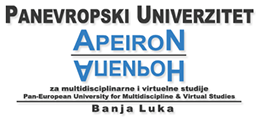Personalized Approach to Early Detection and Prevention of Overweight in Young People
Volume 6, Issue 1 (2016)
Volume 6, Issue 1 (2016)
Personalized Approach to Early Detection and Prevention of Overweight in Young People
Apstrakt:
The article presents the results of studying taste perception thresholds phenylthiocarbamide (FTC) in medical students in order to predict the genetic predisposition of their obesity and the nature of its course. Testing to the FTC, based on the method of Harris and Kalmus (1949), conducted in 339 healthy young people aged from 17 to 29 years. Subjects offered strips of filter paper soaked in solutions of various concentrations of FTC, starting with the lowest dilution to a clear sense of bitter taste. The study found that among people who suffer from excessive and obese, almost twice as likely to occur non-testery compared with healthy people. To recognize the bitter taste phenylthiocarbamide examined patients required significantly more concentrated solutions of the FTC. The observed statistically significant differences in the characteristics of perceptual sensitivity thresholds to allow the FTC to use this test to identify genetic predisposition to obesity.
Ključne riječi:
students, obesity, genetic predisposition
Puni tekst:
Reference:
- Adler, E., Hoon, M. A., Mueller, K. L., Chandrashekar, J., Ryba, N. J., & Zuker, C. S. (2000). A novel family of mammalian taste receptors. Cell, 100(6), 693-702.
- Drayna, D., Coon, H., Kim, U. K., Elsner, T., Cromer, K., Otterud, B., ... & Leppert, M. (2003). Genetic analysis of a complex trait in the Utah Genetic Reference Project: a major locus for PTC taste ability on chromosome 7q and a secondary locus on chromosome 16p. Human genetics, 112(5-6), 567-572.
- Hao, S., Sternini, C., & Raybould, H. E. (2008). Role of CCK1 and Y2 receptors in activation of hindbrain neurons induced by intragastric administration of bitter taste receptor ligands. American Journal of Physiology-Regulatory, Integrative and Comparative Physiology, 294(1), R33-R38.
- Reed, D. R. (2000). Gene mapping for taste related phenotypes in humans and mice. Appetite, 35(2), 189-190.
- Rychkov, Y. G., & Borodina, S. R. (1973). Further investigations of the genetics of hypersensitivity to phenylthiocarbamide in man (experimental, population, and familial data). Genetika, 9, 141-152.
- Wu, S. V., Rozengurt, N., Yang, M., Young, S. H., Sinnett-Smith, J., & Rozengurt, E. (2002). Expression of bitter taste receptors of the T2R family in the gastrointestinal tract and enteroendocrine STC-1 cells. Proceedings of the National Academy of Sciences, 99(4), 2392-2397.






